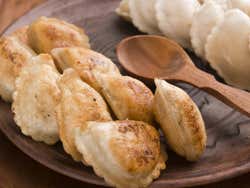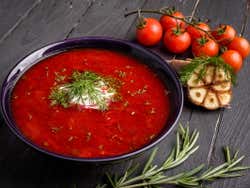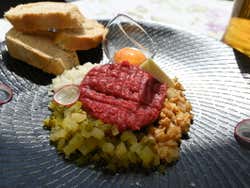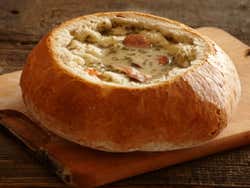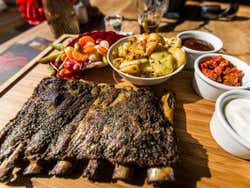
Where to eat in Warsaw
Explore the unbeatable value of Warsaw's dining scene, where typical Polish dishes offer a perfect blend of richness, flavor, and affordability. Uncover the top dining spots in Warsaw and savor the country's distinctive culinary delights.
Warsaw's cuisine has Slavic roots. Typical Warsaw dishes are characterized by the use of local products, such as cabbage, potatoes, and other vegetables, and varied meats, such as beef, chicken, or pork. Polish cuisine is quite similar to other neighboring countries, such as Czech cuisine.
It's rare to find fish in Warsaw restaurants. Polish cuisine is based on hearty dishes dominated by grilled meat and thick, hot soups, perfect to combat the weather in Warsaw.
Typical Polish dishes
- Pierogi: boiled dumplings stuffed with mashed potatoes, fresh cheese, and onions. The filling of pierogi varies; it can be meat, mushrooms, or cabbage. They are usually served as a starter or first course and are the most famous food in Poland.
- Pyzy: these are small potato balls stuffed with meat. It's the quintessential Warsaw dish and, although they seem small, the famous pyzys are very filling.
- Grochówka: this is one of the most common dishes in Polish cuisine, especially in winter. It's a pea puree with potatoes, carrots, and pieces of roasted meat.
- Bigos: this is a cabbage, mushroom, and meat stew. It's usually served with rye bread and potatoes and was a typical dish for hunters due to its nutritional value.
- Żurek: this soup made from rye flour, eggs, mushrooms, and sausages is served in a loaf of bread. Despite its somewhat sour taste, it's one of the tastiest dishes of Polish cuisine.
- Barszcz: this is a beet soup that usually accompanies meats, croquettes, and other more substantial dishes.
- Schabowy: the simplicity of this dish often misleads tourists traveling to Warsaw. It is a breaded pork fillet served with fried potatoes, a very popular dish in Warsaw's cuisine. Simple but delicious!
- Tartar: one of the delicacies of Polish cuisine is tartar, which is made of raw beef served with egg yolk, onion, and pickles.
- Apple pie: this is Poland's dessert par excellence. You'll find it in almost every restaurant in Warsaw.
- Pierniczki: these ginger biscuits filled with jam and covered with a layer of chocolate are a real treat.
- Vodka: if there is one singular typical Polish product, it's vodka. The Warsaw people's love for their national drink is so strong that they have dedicated a museum to it in the capital: the Warsaw Vodka Museum.
- Nalewka: this is a liqueur that mixes fruits, herbs, and spices. Although it has a slight taste of medicine, it's one of the favorite drinks of the Poles due to its high alcohol content.
- Cydr: Polish cider is another typical Warsaw drink. Did you know that Poland is the largest producer of apples in Europe? It's an indispensable ingredient in Polish cuisine!
Eating in a milk bar in Warsaw
Milk bars are Warsaw's traditional restaurants, where English is rarely spoken, no alcohol is served, dishes are simple yet delicious, and you can enjoy a daily meal deal for less than € 5 (US$ 5.84).
Warsaw's milk bars originate from state-subsidized establishments providing dairy fare to factory workers during challenging workdays, and they have retained their original essence. The experience of dining in a milk bar is both unique and uncommon for tourists, with décor and dishes reflecting the austere style of the communist era.
Renowned milk bars to explore in Warsaw include Pod Barbakanem, Familijny, Bambino, Zlot Kurka, and Zqbkowski.
Best places to eat in Warsaw
Warsaw's dining scene is seemingly endless, with tons of delicious and budget-friendly options throughout the city. For indulging in typical Polish dishes, the Old Town stands out as the prime location. Predominantly situated in the Market Square and around the Barbican, numerous restaurants in this area offer an authentic taste of Poland.
Apart from that, the stretch from Royal Castle Square to the Church of the Holy Cross presents another excellent dining area. This broad avenue, lined with royal buildings, hosts a variety of restaurants for just about all preferences.
